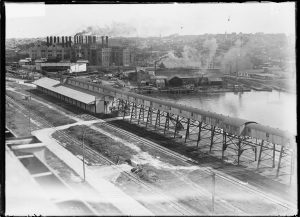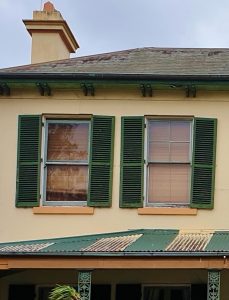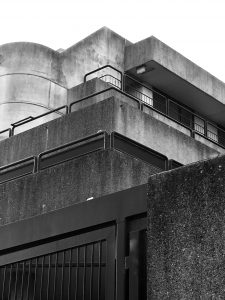by Brian Fuller, Heritage Subcommittee Convenor, Glebe Society Bulletin December 2020
When the NSW Heritage Act was introduced in 1977 it was a turning point in the protection of our built heritage. It followed years of developer-favoured policies that had scant regard for significant buildings, and other assets and events since colonisation, that have contributed to the societal fabric that makes NSW the place that we now enjoy.
Heritage Listing became the mechanism that was to afford the protection.
However, all is not as it should be. Protection is selective and subject to other priorities because Government is not able to protect our heritage whilst simultaneously acting with fiscal responsibility. It displaces heritage protection for short term economic survival.
If you watched the National Trust of NSW Heritage Awards 2020 presentation via Zoom you would have heard the NSW Minister Responsible for heritage, The Hon Don Harwin MLC, state that as Minister his agenda for next year is to modernise our heritage legislation to address the following:
- ‘A new Aboriginal Heritage Cultural Regime
- Reforms to our Heritage Act that makes owning or renting a Heritage property in NSW the ambition and joy of people everywhere
- In the future we need legislation that not only protects but also provides
- We need a listing system that opens doors for adaptive reuse, celebration and economic growth making sure Heritage lives on in all its glory’
That these issues are on his (or the Government’s) agenda is effectively an admission of the shortcomings of the current Heritage Act and Regulations. He has implied that the current listing system is not sufficient for ‘Heritage to live on in all its glory’.

White Bay power station
The most recent statements in relation to the White Bay power station by senior NSW Government Ministers was a very public display of Government disarray in relation to heritage policy and management.
If Minister Harwin has the political strength to persuade Cabinet to ‘modernise’ (his terminology) the Heritage legislation so that our ‘heritage lives on in all its glory’ (again his words), then the Government and its Agency’s MUST abide by their own legislation as an owner, and provide sufficient resources to ensure its effectiveness on behalf of future generations
The subsequent statement by Treasurer Dominic Perrottet that the power station was a shocking building and ‘should be knocked down like the Sirius Building’ shows a complete lack of regard for the integrity of heritage listing, and no sense of the meaning of heritage and historical value.
The White Bay power station was added to the NSW State Heritage Register on 2 April 1999, after ceasing operations on Christmas Day 1983. The site is owned by the NSW State Government.
Planning Minister Stokes threw water on the ensuing fire by declaring Perrottet an ‘excellent Treasurer, appalling architect’.
We understand this reaction by Minister Stokes came after a site visit to the power station by both politicians. Where was Minister Harwin, the Minister responsible for Heritage, during this site visit?
Despite the intervention by Minister Stokes, there is still no announcement as to the commitment by the Government to its maintenance and eventual adaptive reuse. In this regard all governments since decommissioning and subsequent listing have been ‘missing in action’.
It is possible that unless there is a commitment to the future of the power station it will succumb to ‘demolition by neglect’ by its owner, the NSW State Government of NSW, notwithstanding the State Heritage Listing which that government authorised, supposedly accountable pursuant to the Heritage Act 1977 and Regulations which is administered by its agencies, the Heritage Council and Heritage Office of NSW.
After the controversy around the relocation of the Powerhouse Museum at Ultimo, the State Government quickly included the Ultimo Power House on the State Heritage Register, supposedly to demonstrate its acknowledgement of, and to, the listing process as a means of preserving and protecting our sites of heritage significance.
So, in a matter of months the Government Heritage-listed a building to demonstrate its heritage credentials whilst senior ministers of the same Government indicate disarray in recognising the significance of another heritage-listed building for which it has no vision.
The protection is flawed in that it is selective and/or ignored.
Glebe Island Bridge
Similarly, the Glebe Island Bridge, a State Heritage-listed asset in Government ownership, has been left to deteriorate for 25 years simply because successive governments, and their agencies, have no vision for the adaptive reuse of this heritage asset nor a commitment to the principles of preservation once listed.
Unfortunately, the only time Government engages in heritage protection is at the time of a Development Application. If there is no DA, an irresponsible owner will allow deterioration to a point where ‘demolition by neglect’ becomes the only option. The Government heads in this direction in relation to its own assets, and notably the White Bay power station and the Glebe Island Bridge.
The Glebe Island Bridge is discussed in more detail elsewhere in this edition of the Bulletin.
The NSW Heritage Act 1977 and Regulations contain provision for minimum standards of repair and maintenance, which if enforced would prevent State Heritage-listed buildings reaching the point of ‘Demolition by Neglect’.
Bidura
Back in Glebe we have the uncertain situation with Bidura (the heritage-listed house – not including the remand centre). Here the Government, via its agencies, the Heritage Council and Heritage Office of NSW, is subjecting itself and the future of this State Heritage-listed house to the development timings of the owner, Visionland.
Visionland’s prime focus, as is to be expected, is with the redevelopment of the old Metropolitan Remand Centre at the rear. They do not need the main house, but they do need the land upon which it sits, to satisfy the open space requirements of the development proposal.
The Act and the Regulations empower the Government/Heritage Council/Heritage Office to enforce minimum standards of maintenance and repair, but instead of exercising those powers the government has chosen to defer its authority until a new development application is lodged, whenever that may be.

In the meantime, Bidura continues to deteriorate at least to the visible exterior.
The Glebe Society has had verbal and email communication with the Heritage Council/Office and more recently formally called upon the Heritage Council to exercise the powers contained in the Act and Regulations as a matter of urgency, whilst pointing out that the protection of Bidura must not be compromised by the will of the developer or the lack of tenacity in the exercising of those powers.
There is the possibility that the development will be delayed due to market forces, with the house continuing to deteriorate to the point of ‘Demolition by Neglect’.
The reality is that there are sufficient powers within the Act and the Regulations to protect our valuable heritage, but only to the extent that the Government adopts and supports it in its entirety.
If Minister Harwin has the political strength to persuade Cabinet to ‘modernise’ (his terminology) the heritage legislation so that our ‘heritage lives on in all its glory’ – again his words – then the Government and its Agencies MUST abide by their own legislation as an owner and provide sufficient resources to ensure its effectiveness on behalf of future generations.
In short, the Government needs to do its job, and stop supporting our disappearing heritage via ‘demolition by neglect’.











There are no comments yet. Please leave yours.